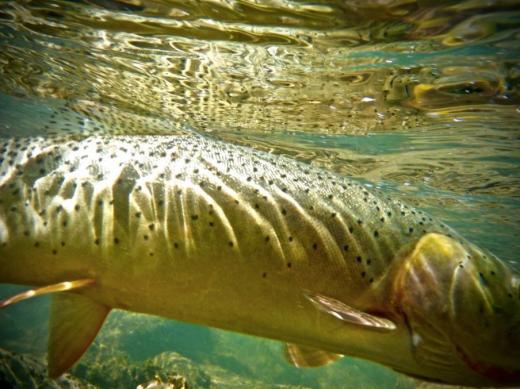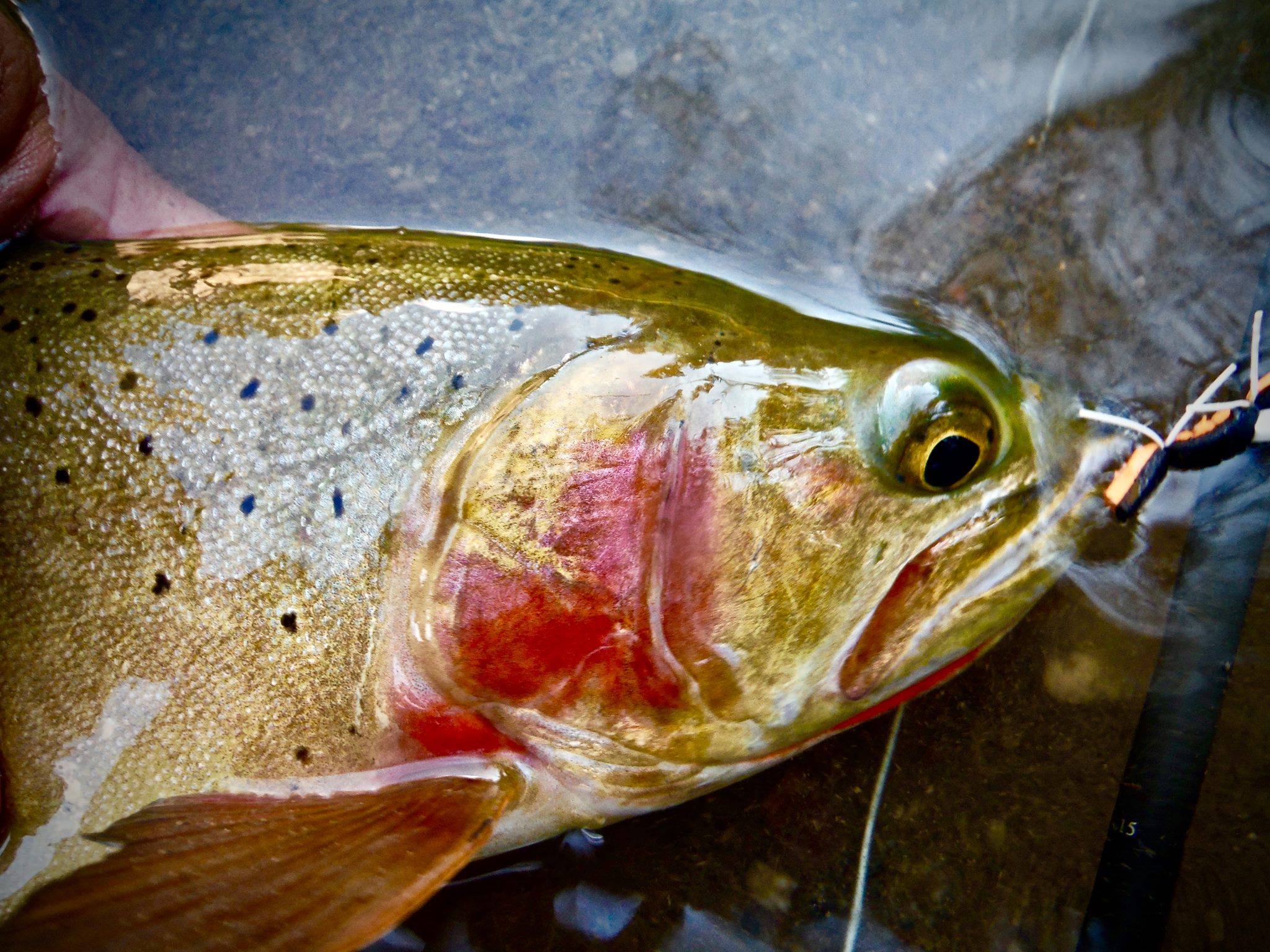By Chris Hunt
The old two-track along the small stream in Idaho’s Caribou National Forest sees some ATVs now and then, but not too many folks in their Razors are there to fish, thankfully.
It’s not a secret stream, not by any means. But it takes some effort to get there. And once you’re there, you’re there. If you forgot something back in town, well… unless you want to waste the better part of a day, you should think of ways to work around it. Because this time of year, wasting a day running back down the mountain means wasting a day on the water when fat cutthroats are looking up in search of big, terrestrial meals.
It’s “hopper time” here in the arid Rockies. It’s a dry-fly fisher’s equivalent of Christmas and Easter rolled into about four glorious weeks in late summer. Sometimes it lasts longer, and sometimes it’s cut short by a wildfire, a hard freeze or even a snowstorm in early September. But, for our lot, it’s the most magical month on the calendar.
It’s when you can put the size 18 PMDs away and ditch the midges. There’s no need for gimmicky attractors, unless they’re big and foamy and float like an arc in a deluge. You can even put the streamer and nymph boxes away, if you like. And tippet? No 7x needed. Or 6x. Go with 3x, and be happy about it. These fish aren’t worried about your leader; they’re worried about filling their bellies with giant gulps of protein that, with a wind gust here and there, end up floating helplessly downstream at the whim of the water.
As I walked down the slightly overgrown road along the valley floor, every step kicked up a host of grasshoppers. They danced and clicked and flitted into the tall grass, darting away from my footfalls.
As I got closer to the stream, I slowed my pace and began my stalk. There, about five feet ahead of me, an unassuming grasshopper sat on the trail. I knelt and slowly crab-walked toward the big summer bug. My hand cupped tightly, I deliberately began to reach out toward my prey. Then, with the quickest motion I could summon, I slapped my hand over the hopper. I could feel it squirming between my fingers. Success.
I lifted the bug from the ground and held it up to my face. It spat out a mouthful of “tobacco juice,” as my grandfather used to call it, and struggled mightily as I shifted my grip to hold it between my thumb and forefinger. It wasn’t going anywhere.
I rested my 3-weight fly rod against a willow branch and moved stealthily toward the stream. A long tail-out stretched below me and dived into a sharp bend in the creek over a deep pool. Prime holding water.
With a quick toss to ensure an appreciative “splat,” I heaved the sacrificial grasshopper into the creek. It landed just below the fast water of the tail-out and started to paddle as quickly as it could to the dry bank. It spun and twisted on the water’s surface, fighting against this foreign element. The current pulled the fat bug downstream, away from the rough water and over the deep, green pool. To the hopper’s apparent relief, the creek carried it closer to the far bank.
And then, inches before it found footing on a half-drowned willow branch, a nose the size of my fist pushed from the water and sucked the big bug in. No splash. Very little violence. Just a healthy gulp.

There’s no need to explain the adrenaline that accompanies such a sight. Seeing big fish in small water is a thrill for any backcountry fly fisher. Seeing big fish rise with abandon to gulp down a grasshopper the equivalent of a size 6 dry fly might be as close to fly-fishing Elysium as we’ll ever get.
My hands trembled as I removed the fat Chernobyl from the hook-keeper on my fly rod. I pulled out what I thought to be just enough line to float my Gink-soaked, foam-and-rubber-legged imitation over that same pool, hopeful that the trout would once again rise for a big meal. I stretched out a back cast and laid the fly tight against the current seam. The rubber legs vibrated against the pulsing current and the fly twisted appreciatively in the water.
I watched in anticipation as the high-floating craft-store creation trundled atop the water and floated helplessly in the deep water.
The big nose broke the surface again. The line stretched tight.
It’s hopper time.
Chris Hunt is the national editorial director for Trout Media. He lives and works in Idaho Falls, Idaho.



